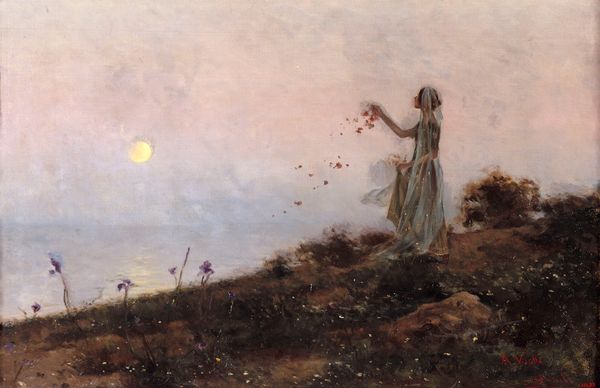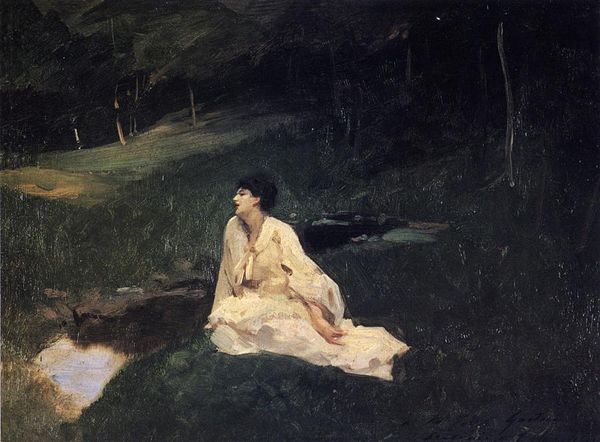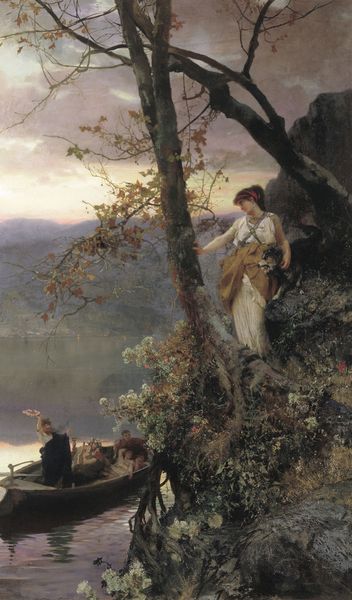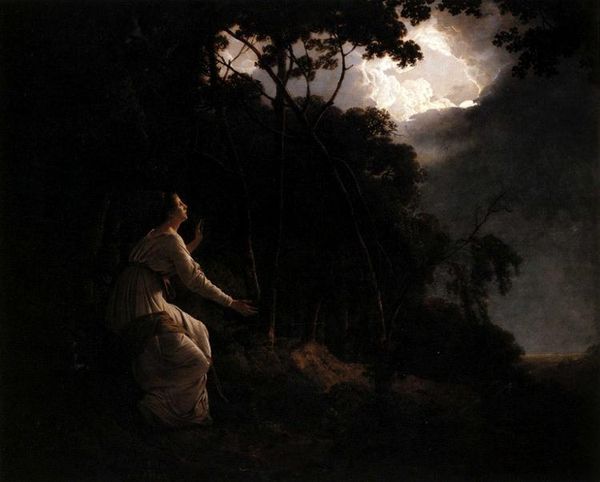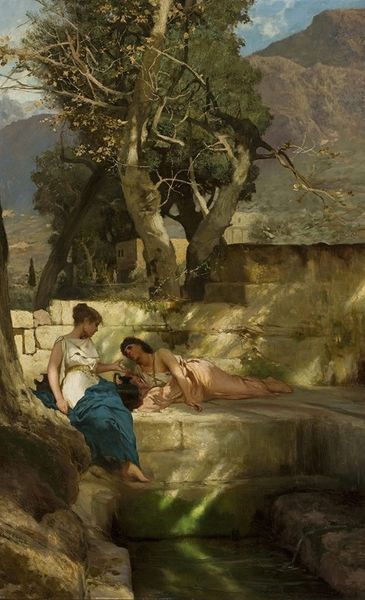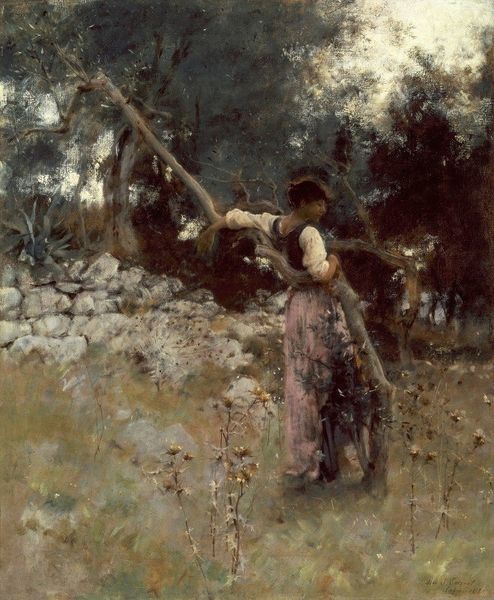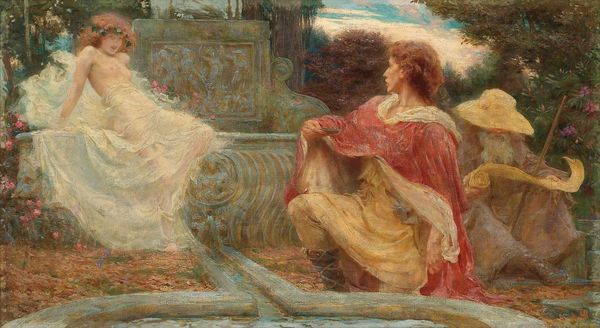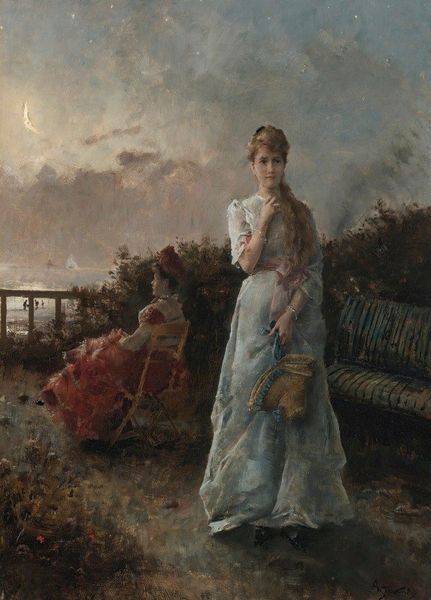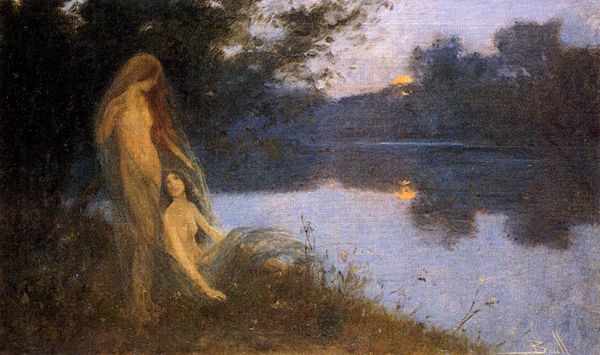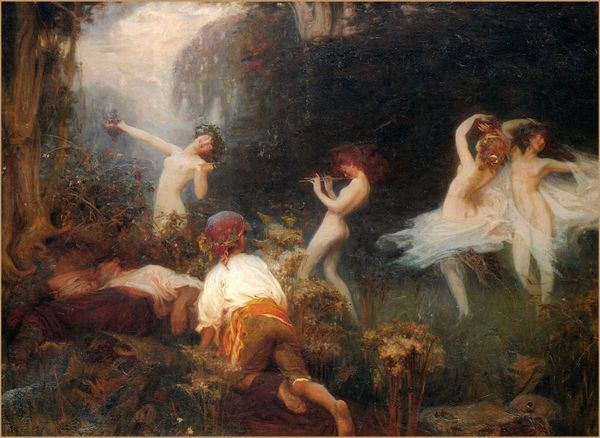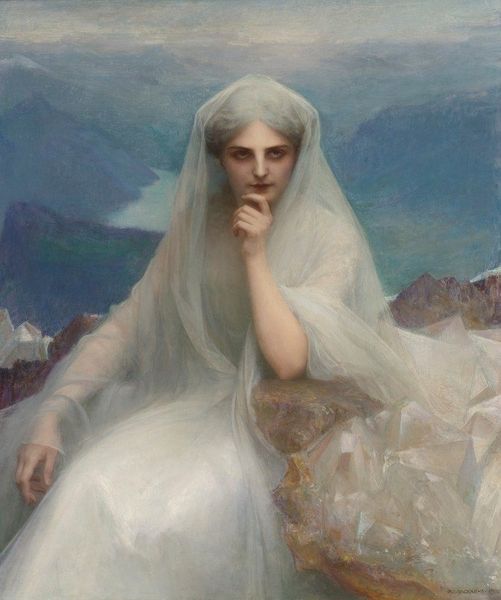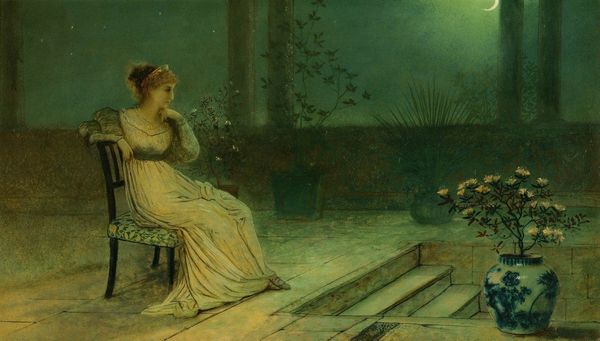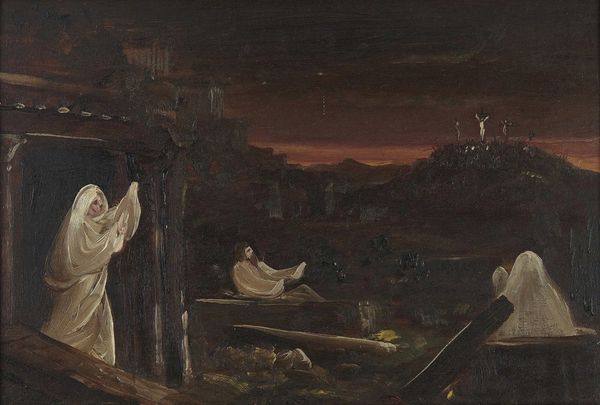
#
sculpture
#
charcoal drawing
#
painted
#
possibly oil pastel
#
charcoal art
#
oil painting
#
underpainting
#
painting painterly
#
charcoal
#
watercolor
Copyright: Public domain
Curator: Let’s delve into Mikhail Nesterov’s “The Empty Tomb,” created in 1889. The piece presents a profound depiction of a pivotal moment in Christian theology. Editor: Oh, wow. There's something almost…painterly about it. The heavy darkness just clings to everything except her. Whoa. It's ethereal in that, almost movie magic, sort of way. What’s it made of, do we know? Curator: We believe that the painting was created with a mix of charcoal and possibly oil pastel on canvas, giving it a uniquely textured surface that augments the emotional tenor of the scene. We need to address how Nesterov frames the scene as an entry point for interpreting the intersections of religion, identity, and Russian national identity in art. Editor: Heavy, like those women way over on the left there with their candle light struggling in the night. They look...strained. Honestly, like me when I’m trying to find my glasses at night, so maybe the painting hits differently for those of us getting a little…visually challenged? Haha. Sorry. Curator: It's compelling how Nesterov utilizes darkness, creating an environment heavy with sorrow that reflects the cultural climate of late 19th-century Russia. This historical lens emphasizes themes of oppression and social inequality, providing context for a richer analysis. The angel’s bright gown emphasizes that themes of justice and hope can persevere in even the bleakest scenarios. Editor: Exactly! Like she is almost too bright to even look at! But her gown is so textured...so beautiful with those brushstrokes. And if you let your eyes relax the stars almost glitter...almost. I do find it hard, to make space for both their suffering *and* her otherworldly luminescence. Curator: Your reading actually underscores an important dialogue between despair and hope—both can simultaneously occur within the same historical reality. Editor: Well put. But I'm also curious if the angel herself is an actual being. Do you ever wonder, like in the story, what it would feel like to stand in that light? Curator: Through a lens of materialist criticism, one might analyze her as a culturally-fabricated emblem reflecting power structures that maintain a narrative of redemption as a mechanism for managing discontent, distracting the women from addressing the root of oppression. Editor: Man. We really took it to another plane. From empty tomb to empty promises in under two minutes. Amazing!
Comments
No comments
Be the first to comment and join the conversation on the ultimate creative platform.
